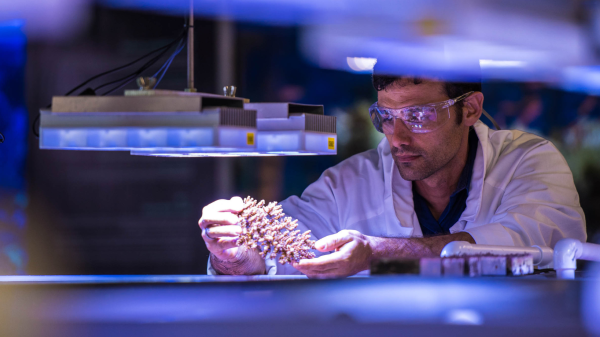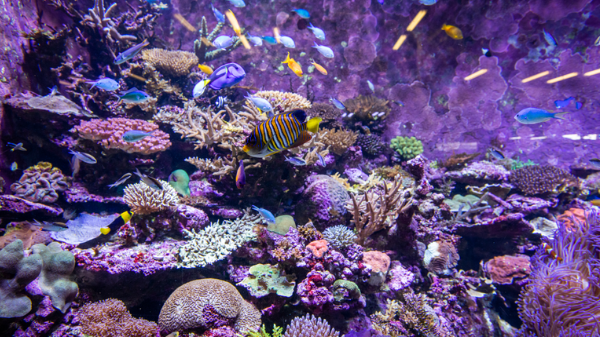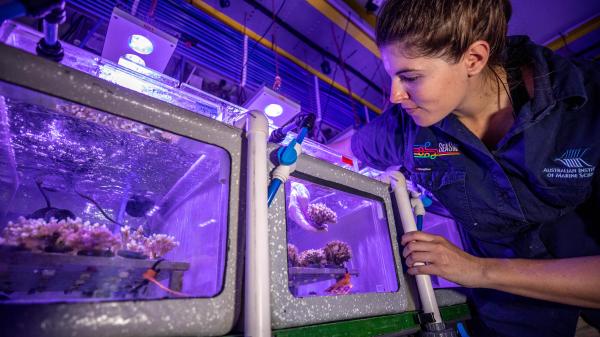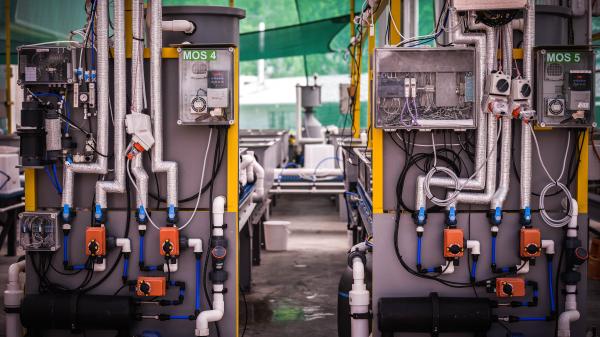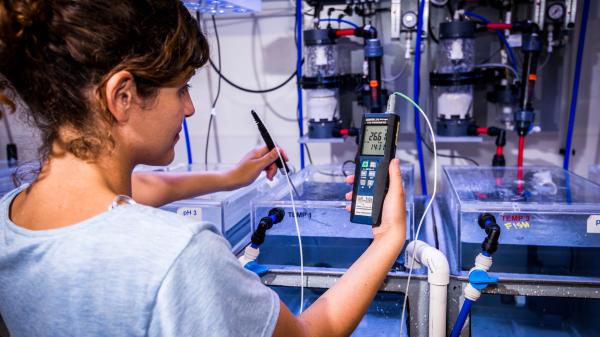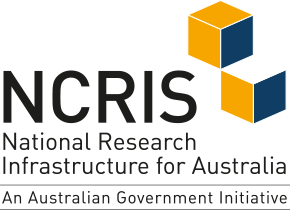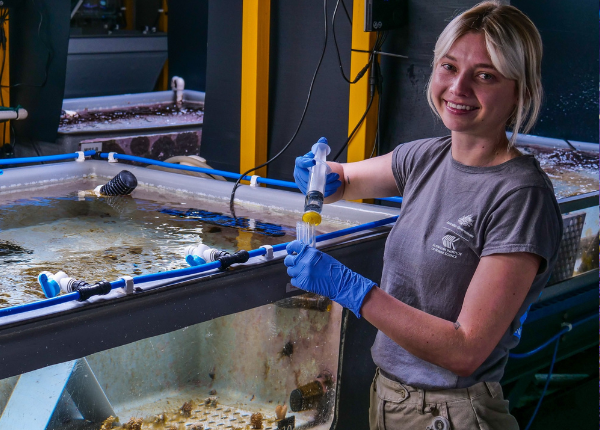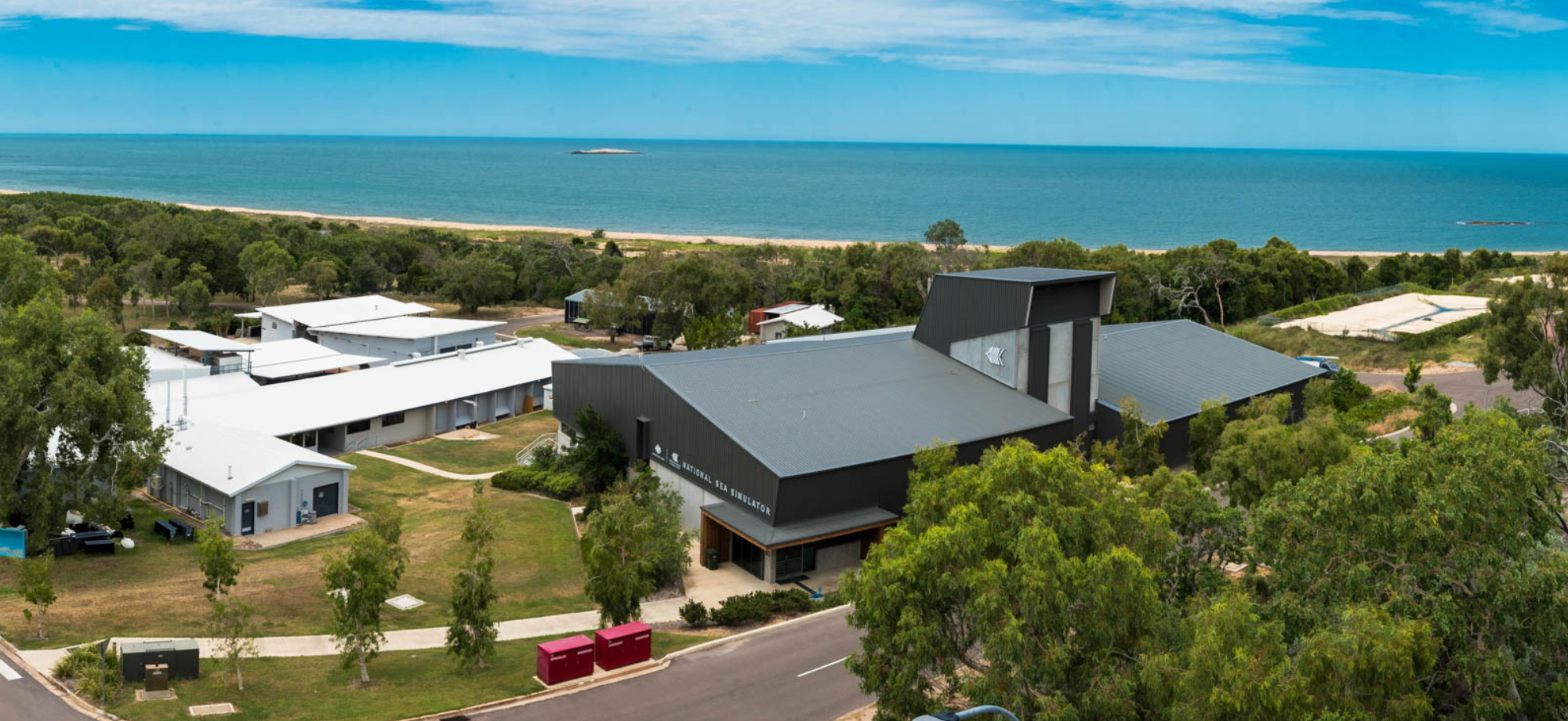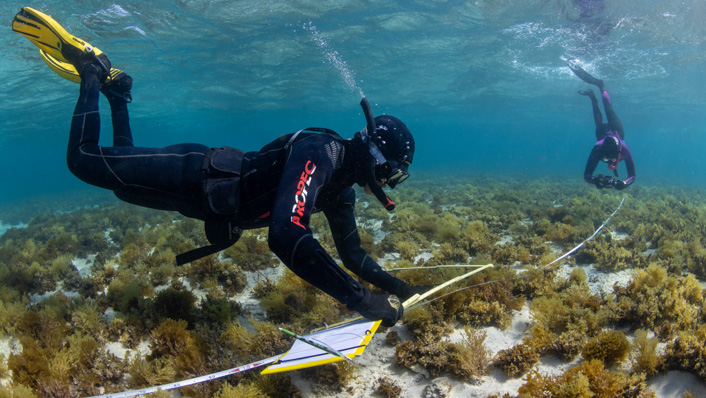The National Sea Simulator (SeaSim) at AIMS is a world-class marine experimental research facility, supported by the Federal Government’s National Collaborative Research Infrastructure Strategy (NCRIS). It enables complex, large scale, long-term aquarium-based experimental studies that are crucial in supporting research on Australia’s tropical marine estate.
SeaSim offers a diverse range of experimental spaces, from 1300m2 of outdoor areas ideal for large-scale experiments under natural light to smaller controlled-environment rooms with artificial lighting. The facility allows precise control over key environmental parameters - temperature, light, pH, salinity, sediments, and contaminants - creating unparalleled opportunities to study marine organisms, processes and ecosystems. This supports research in future ocean scenarios, climate change adaptation and mitigation, water quality, ecotoxicology, marine diseases and pests, biodiversity conservation, sustainable development, and technology and innovation.
Support throughout experiment process
SeaSim offers comprehensive support throughout the entire lifecycle of marine aquarium experiments. This includes assistance with experimental design, system design, setup and operation, collection and acclimation of marine organisms, advanced husbandry support and 24/7 monitoring of experimental systems, including out of hours alarm response.
Expert support for bespoke experimental design
If an experimental system to facilitate your research doesn’t exist, SeaSim’s expert team can design custom systems. Using Computer Assisted Design (CAD), these systems are developed, built in the AIMS workshop, and then rigorously tested, and commissioned before integration into SeaSim’s sophisticated water manipulation systems. This end-to-end capability offers unparalleled resources for marine experimental research.

